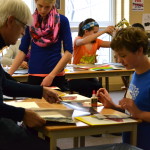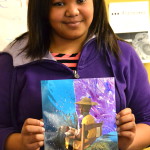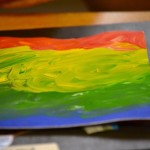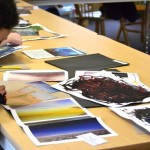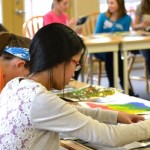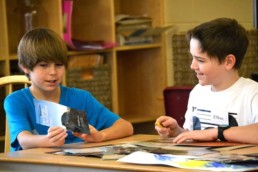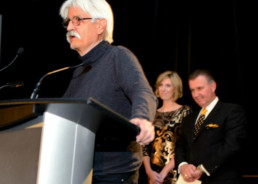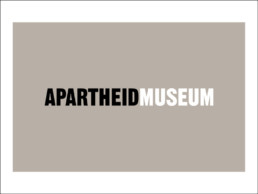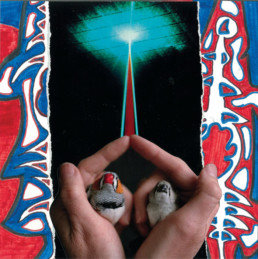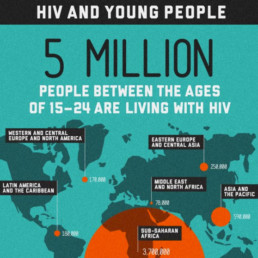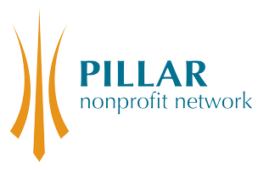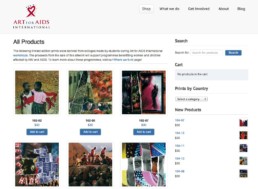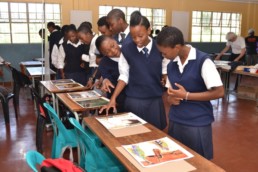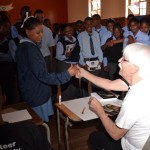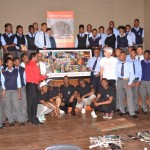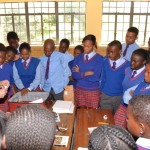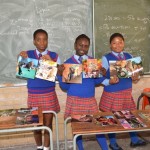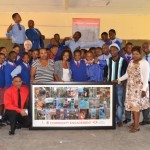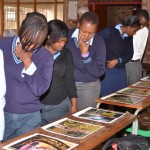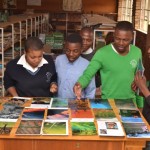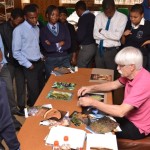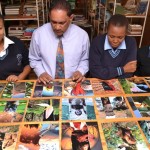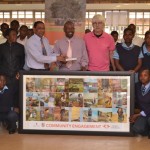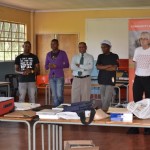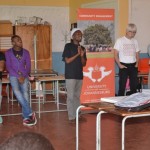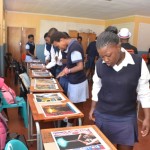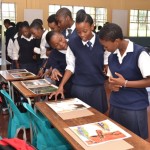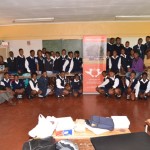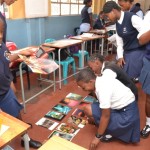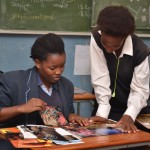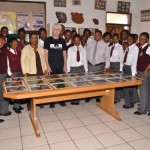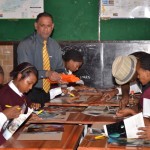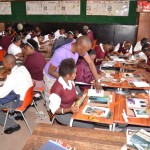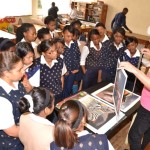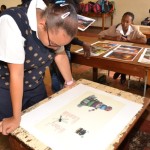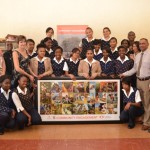How to Make a Great Art for AIDS Collage in 5 Steps
The following post was written by Art for AIDS Marketing and Communications Intern Robyn Bell.
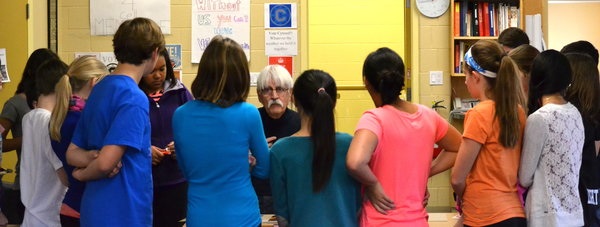
Throughout the year, we have the opportunity to exhibit some incredible artwork made by young people from around the world to help raise awareness about HIV and AIDS. There is one question that comes up frequently at our exhibits, however, that we thought we should address: How are they made? Since there are more people out there with the same question, we thought we would just show you.
Recently, we had the privilege of being welcomed into the Montessori Academy of London to host a series of workshops with grade seven and eight students. Art for AIDS International's Executive Director, Hendrikus Bervoets, led students through the creative collage-making process, encouraging independent and imaginative thinking, while discussing the impact of HIV and AIDS on communities around the world. Of course, the workshop also resulted in a new collection of artwork created entirely by the participating students. To show you how they did it, here is the 5 step process that students took to create some beautiful and powerful images:
1. Play
Students at the Montessori Academy started the collage making process by getting their hands dirty and playing with paint. These finger paintings are used as the background for their collages.
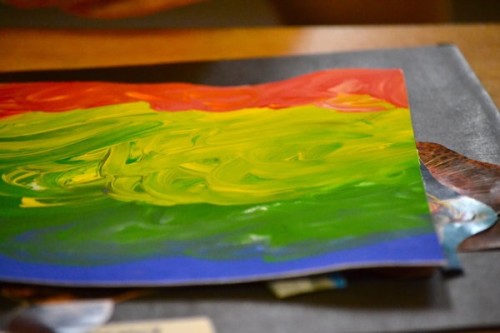
2. Tell a Story
After flipping through photos and magazines, students ripped out some of their favourite pages to use as either background pieces or story telling pieces. Some chose images of scenery featuring hot deserts, blue skies, or calm oceans, while others chose images of people or animals to tell their tales.
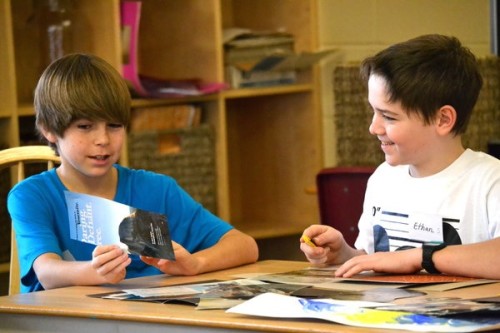
3. Tear it Up
Using inner artistic intuition, pieces were cut, torn, and ripped for the next layer of the collage. Background pieces could be torn or ripped, while story pieces were cut out using careful precision. Whether the students chose colour, symmetry, shape, texture or juxtaposition in their art, they were always encouraged to follow their gut instincts of what looked most personally appealing. The creative process remained entirely in their hands.
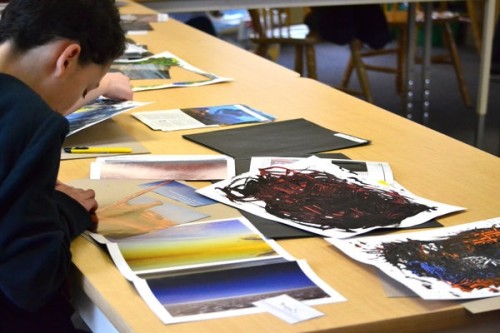
4. Glue it Down
In the final step, students layered their pieces using the textured finger paintings as a base. Background images were layered next, with the carefully cut storytelling pieces placed last, giving the final punch of colour and expression. All pieces were then glued down.
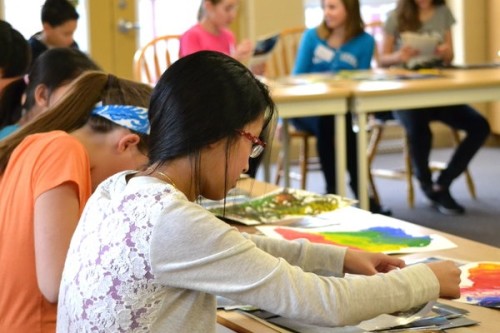
5. Show it Off
Give us a smile, they look great! Every finished piece from Montessori Academy was utterly unique. The final pieces boasted bold colours, engaging story pieces and interesting uses of juxtaposing images. Each collage will be produced as original machine-made limited edition prints to be signed and numbered. After the portfolios are complete, the artwork is exhibited and sold in schools, and throughout the local and global community at special events, in galleries and museums, at concerts, and online. Funds will then be used to support select initiatives directly that provide care and support for women and children affected by HIV and AIDS in some of the communities hardest hit by the pandemic throughout Africa.
These students all demonstrated a knack for the creative process and saw the beauty of being involved in the global response to HIV and AIDS. We had the fortune to be there while we watched each student beam at their artwork. Together, we were reminded the power of driving change through art.
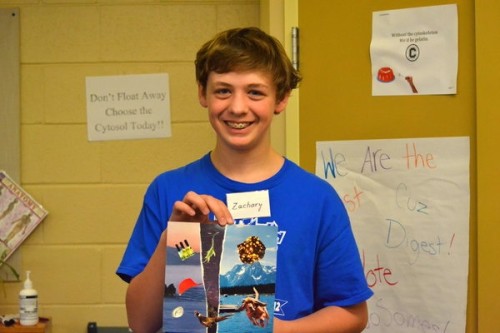
Art for AIDS International would like to thank the Montessori Academy of London, students, teachers, and supervisors for hosting us. We're excited to share the final prints with you, and the broader community over the coming months!
Art for AIDS International Recognized for Community Innovation [VIDEO]
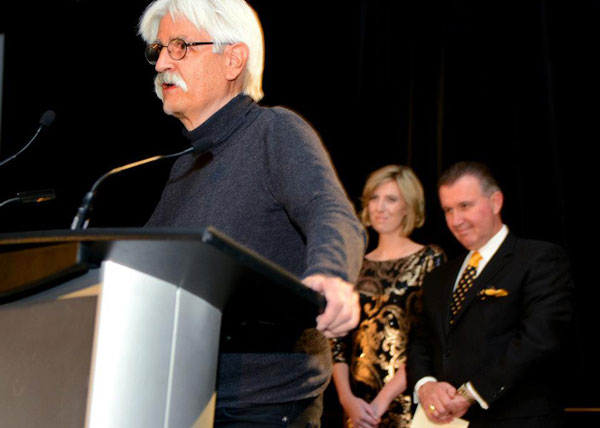
This past week, Art for AIDS International won the Community Innovation Award at the 2012 Pillar Nonprofit Network Community Innovation Awards.
The award, which was presented at the London Convention Centre in front of over 600 community members, was accepted by Art for AIDS Executive Director, Hendrikus Bervoets.
"On behalf of all of us at Art for AIDS, I am humbled and honoured to receive this recognition" said Bervoets. "Our organization grew out of an initiative aimed at encouraging young people in London to take part in the global response to HIV and AIDS. The passion and enthusiasm that these young people, and the broader London community have shown for our work, however, has been a driving force for us to expand beyond our own backyard and into schools and communities around the world."
In addition to Hendrikus' presence at the event, a number of Art for AIDS Board Members were also in attendance.
"I have been a Board member of Art for AIDS for over 5 years and during this time been extremely impressed with the innovative and collaborative nature of the organization which is aimed at providing education, advocacy and support for those affected by HIV and AIDS throughout sub-Saharan Africa. Hendrikus provides passion and energy in every workshop and encounter he has and helped to elevate the issue of HIV and AIDS throughout our community" said Andrew Chunilall, Director of Finance for the London Community Foundation, and Treasurer of the Board of Directors at Art for AIDS International.
All of us at Art for AIDS are honoured to receive the recognition, and would like to thank Pillar Nonprofit Network and the London community for their ongoing support, and for the enthusiasm they've shown for our work.
You can see all the photos from the Community Innovation Awards on the Pillar Nonprofit Network Facebook page. You can also watch the short video presented by Pillar at the ceremony below:
Art for AIDS International Exhibits at the Apartheid Museum
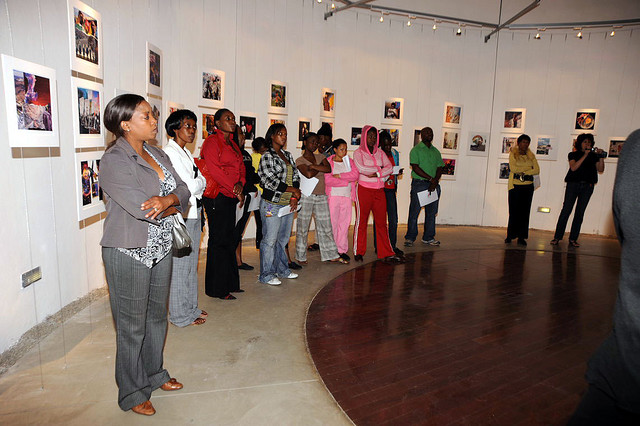
In 2009, Art for AIDS International was privileged to host a four month exhibit at the landmark Apartheid Museum in Johannesburg, South Africa. This week, and three years later, we are excited to announce that the Apartheid Museum will be opening a new exhibit, featuring artwork produced during Art for AIDS workshops held throughout South Africa, Zimbabwe, and Canada.
While Art for AIDS workshops seek to educate young people about HIV and AIDS, interconnected themes related to social justice, equality, respect, and responsibility play important roles in our discussion with students, and this is often represented in the artwork they produce. This work, as a result, is a perfect addition to the Apartheid Museum's permanent exhibit which focuses on diverse themes related to democracy, equality, reconciliation, diversity, responsibility, respect and freedom.
The exhibit will run into the new year and all exhibited prints will be available for purchase in the Apartheid Museum gift shop with proceeds supporting local projects benefiting women and children affected by HIV and AIDS. For more information about this exhibit, please contact us.
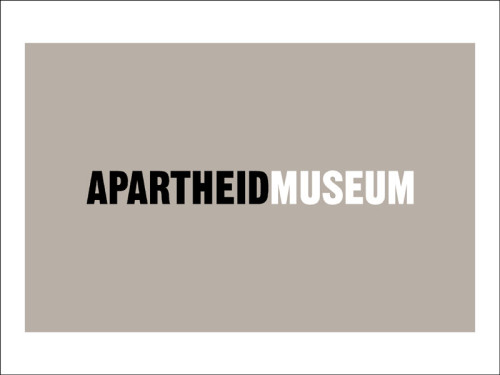
About the Apartheid Museum
The Apartheid Museum opened in 2001 and is acknowledged as the pre-eminent museum in the world dealing with 20th century South Africa, at the heart of which is the apartheid story.
Recognizing Humanitarianism at Home and Abroad
 On a daily basis, stories about war, poverty, disease, and injustice dominate the news and can be easy to recognize in the community around us. Despite this, there are equally as many stories highlighting success at the individual, community, and global levels worth acknowledgment and celebration.
On a daily basis, stories about war, poverty, disease, and injustice dominate the news and can be easy to recognize in the community around us. Despite this, there are equally as many stories highlighting success at the individual, community, and global levels worth acknowledgment and celebration.
This week, in recognition of World Humanitarian Day, we would like to recognize the tireless work of the doctors, nurses, engineers, teachers, and aid workers around the world, that every day overcome adversity and work improve people's lives. We would also like to thank the young people who contribute their vision of a better world through art in our workshops, the teachers who invite us into their school communities, and our own team of volunteers for their hard work and enthusiasm.
As we recognize World Humanitarian Day, let's each take up the simple call to do something good for someone else, as often as we can.
Learn more about World Humanitarian Day, or how you can get involved at: http://www.un.org/en/events/humanitarianday/
A Letter of Thanks from Moosonee Public School
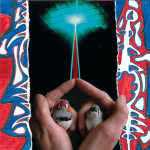 This past spring, Art for AIDS' Executive Director, Hendrikus Bervoets, traveled to Moosonee and Moose Factory Ontario for the third time in two years to host workshops with young people covering a range of topics including HIV, discrimination, and social justice. Recently, we were honoured to receive a letter of thanks from one of the teachers involved, which, with her permission, we wanted to share. While we consistently work to ensure that our workshops are engaging, fun, and educational for everyone involved, letters like this affirm that we are on the right track and are a source of motivation for our whole team:
This past spring, Art for AIDS' Executive Director, Hendrikus Bervoets, traveled to Moosonee and Moose Factory Ontario for the third time in two years to host workshops with young people covering a range of topics including HIV, discrimination, and social justice. Recently, we were honoured to receive a letter of thanks from one of the teachers involved, which, with her permission, we wanted to share. While we consistently work to ensure that our workshops are engaging, fun, and educational for everyone involved, letters like this affirm that we are on the right track and are a source of motivation for our whole team:
Although some of us may never travel the world, or even leave the little bubble that is Moosonee, I thought it was very educational for the students to meet Hendrkus; a world traveler with a humanitarian spirit.
Hendrkus relayed so many powerful and thought-provoking messages during his workshop; I know that many participants were touched by various things he said. For me, his comments of acceptance were very moving and encouraged me to be less judgmental and more open to the knowledge and experiences of those around me.
I have been racking my brain for months, trying to design a workshop that would prove to be a self-esteem builder while also teaching our students resiliency. As it turns out, all I had to do was have my students attend one of Hendrkus’ workshops! The empowerment, confidence and overall joy in the room throughout the two days was as infectious as it was incredible.
Words cannot express how grateful I feel for having had the opportunity to participate in the “Art for Aids” workshop. Being able to share it with the Grade 8 students of Moosonee Public School makes it that much better. I know that the messages of acceptance, social responsibility and self-worth that were communicated throughout the workshop will go a long way in aiding our students achieve lasting success in all of their endeavors.
A big thank you to our Supervisory Officer, Mr. Tom Steele, who had a vision of this workshop happening months ago and went to great lengths to ensure that it became a reality. And to Hendrkus, who spread a wonderful message of self-empowerment to all our Intermediate students while simultaneously taking them one step closer to becoming caring, informed citizens of the world. I look forward to when our paths cross again.
Emily Samuel
Grade 8 Teacher
Moosonee Public School
We would like to thank all of the students, teachers, and administrators from both the Moosonee Public School in Moosonee, Ontario, and the Ministik Public School in Moose Factory, Ontario, for their support, and the enthusiasm they've shown for our work. We are all touched and looking forward to our next opportunity to work in both communities.
Read about our previous trips to Moosonee and Moose Factory.
HIV and Young People [Infographic]
In 2011, the Joint United Nations Programme on HIV/AIDS (UNAIDS) challenged young people from around the world to collaborate and crowdsource the next global HIV strategy. This past April, we were excited to share that strategy with all of you along with our commitment support tens of thousands of young people in promoting this campaign. Today, to build on that commitment, we wanted to share with you the latest CrowdOutAIDS infographic and encourage all of you in turn to share this important information with others.
Globally, its estimated that five million young people (15-24 years of age) are living with HIV. About 3000 young people are newly infected with HIV each day. According to recent surveys in low- and middle-income countries, only 24% of young women and 36% of young men responded correctly when asked questions on HIV prevention and transmission.
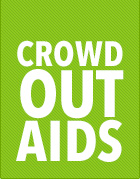 For more details on CrowdOutAIDS visit http://www.crowdoutaids.org/.
For more details on CrowdOutAIDS visit http://www.crowdoutaids.org/.
To read other Art for AIDS International posts related to UNAIDS visit: http://www.artforaidsinternational.org/tag/unaids/
Art for AIDS selected as Finalist for Pillar Community Innovation Awards
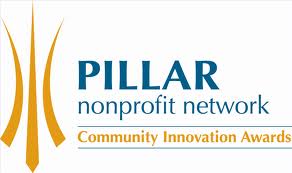 Each year, the Pillar Nonprofit Network recognizes organizations and individuals that demonstrate innovation, leadership, and collaboration within the not-for-profit sector through the Pillar Community Innovation Awards. This year, we are proud to announce that Art for AIDS International has been recognized as a finalist for Community Innovation alongside two other London-based programs.
Each year, the Pillar Nonprofit Network recognizes organizations and individuals that demonstrate innovation, leadership, and collaboration within the not-for-profit sector through the Pillar Community Innovation Awards. This year, we are proud to announce that Art for AIDS International has been recognized as a finalist for Community Innovation alongside two other London-based programs.
Previous Pillar Community Innovation Award recipients include Habitat for Humanity, the Boys' and Girls' Club of London, and Meals on Wheels. We would like to sincerely thank Pillar Nonprofit Network for recognizing our work, and to all other nominees for their commitment and dedication to the London and surrounding community.
The final award ceremony will take place on November 13, 2012 from 6:30-9:30 PM in the London Convention Centre. For more information on the event, or to view the full list of finalists under each category, please visit Pillar's Community Innovation Award website.
Art for AIDS Opens Online Gallery and Shop
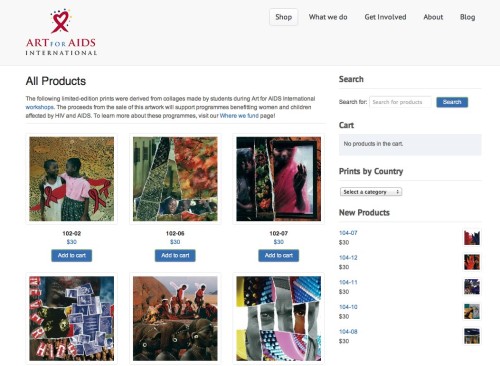 All of us at Art for AIDS International are proud to announce that we have just launched our new online shop!
All of us at Art for AIDS International are proud to announce that we have just launched our new online shop!
With this is a new and exciting feature we will be able to showcase and share the tremendous work that students produce during our workshops and make those works available to a broader global audience. Just like in our physical gallery, new prints will be regularly added and rotated through our online gallery, so stop by frequently to see and purchase new artwork.
Each print is part of a limited edition and has been hand-signed by the artist. The artwork is created during Art for AIDS International workshops with students from various countries including Canada, Zimbabwe, South Africa, the Netherlands and more that address the impact that HIV and AIDS is having on communities across Africa and around the world.
For just $30 you can purchase a piece of beautiful art as well as give back with proceeds supporting Art for AIDS parnter projects in sub-Saharan Africa working with women and children affected by HIV and AIDS.
Coupon Code
We are also pleased to announce that the first 100 orders will receive $10.00 off their total purchase. Just enter "NEWSHOP" as the coupon code in the shopping cart before you check-out.
Thanks to everyone for your continued support. Please let us know what you think of the new online gallery by leaving a comment below. We will continue to update it, and add new prints and features in the weeks to come.
Students use visual art to stop the spread of HIV in South Africa [Gallery]
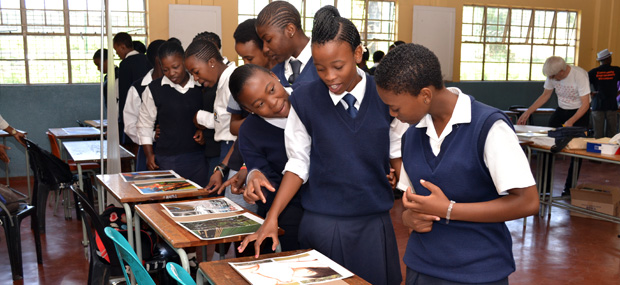
Over the past few months we've been incredibly busy hosting workshops with a growing group of students in Canada, and throughout southern Africa. Most recently, this has included two solid weeks of work with some incredible young people in Soweto and Johannesburg. [See photos below!]
Hendrikus Bervoets, Art for AIDS International's Executive Director, hosted workshops with 192 students in six high schools and at the University of Johannesburg in partnership with the University's Department of Community Engagement. These workshops introduced students to a range of themes including HIV prevention and testing, gender and racial equality, self-esteem, and social justice through the medium of art making.
“The student's excitement was really quite unbelievable. I walked into the classrooms as a complete and total stranger and talked to rooms full of South African students. While I was a stranger when I walked in, however, I felt that I walked out as a friend. In such a short period of time there was this phenomenal connection and discussion being made with young people” - Hendrikus Bervoets
All of the workshops were facilitated by Hendrikus with support from 8 University of Johannesburg students who are part of a collaborative Art for AIDS mentorship programme there. The secondary school workshops were also used to collect important data as part of a longitudinal study on information quality, comprehension and of course, student enjoyment during Art for AIDS workshops. This data helps us continue to ensure our workshops are effective, enjoyable, and tailored to be regionally relevant to the participants.
During the workshops, we were also privileged to notify a student from Noordgesig Secondary School, Busisiwe, that she had won a scholarship sponsored by the Ontario Teachers' Federation (OTF), culminating an Art for AIDS/OTF school Twinning Project organised last year between Noordgesig and Northern Lights Secondary School in Moosonee, Ontario.
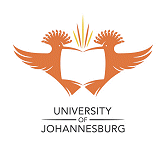 All of us at Art for AIDS would like to thank the Department of Community Engagement from the University of Johannesburg for their support and partnership, as well as the University’s mentorship students who volunteered their time to support the workshop process, and to act as role models for the secondary school participants. We would also like to thank the Ontario Teachers' Federation for their support, sponsorship, and for their dedication to empowering young people through education. Finally, we would like to thank each of the students for their questions, comments, and for the incredible pieces of artwork they produced and shared - which we will soon be sharing with all of you.
All of us at Art for AIDS would like to thank the Department of Community Engagement from the University of Johannesburg for their support and partnership, as well as the University’s mentorship students who volunteered their time to support the workshop process, and to act as role models for the secondary school participants. We would also like to thank the Ontario Teachers' Federation for their support, sponsorship, and for their dedication to empowering young people through education. Finally, we would like to thank each of the students for their questions, comments, and for the incredible pieces of artwork they produced and shared - which we will soon be sharing with all of you.
Holding workshops is an extremely important part of what Art for AIDS does. Although not everyone is infected with HIV, everyone is affected by it. It is crucial, therefore, that everyone, and especially young people, are educated about the realities of the the global AIDS epidemic, and engaged in the response. If you would like to learn more about our workshops, visit our Workshops page or contact us directly!
“All in all, it was fantastic. I came back to Canada with renewed energy and excitement for the work that I do".
Check out our gallery for photos from our workshops, and to catch a glimpse at some of the great artwork that the participants produced.
CrowdOutAIDS: A new youth-driven, youth-focused HIV strategy
 In 2011, the Joint United Nations Programme on HIV/AIDS (UNAIDS) challenged young people from around the world to collaborate and crowdsource the next global HIV strategy. Today, after five months of collaborative efforts, youth leaders from around the world met in Abuju Nigeria to present CrowdOutAIDS to UNAIDS Executive Director Michel Sidibé; a new strategy produced by more than 5000 young people from 79 countries that will guide the UNAIDS Secretariat’s work on HIV and young people through 2015.
In 2011, the Joint United Nations Programme on HIV/AIDS (UNAIDS) challenged young people from around the world to collaborate and crowdsource the next global HIV strategy. Today, after five months of collaborative efforts, youth leaders from around the world met in Abuju Nigeria to present CrowdOutAIDS to UNAIDS Executive Director Michel Sidibé; a new strategy produced by more than 5000 young people from 79 countries that will guide the UNAIDS Secretariat’s work on HIV and young people through 2015.
Leveraging social media and new crowdsourcing technology enabled young people to shape the future of the global response to AIDS, a first in United Nations history. “It brought decision-making to the grassroots, to the skilled and unskilled, learned and unlearned, rich and poor, to contribute to an issue that affects all our lives: HIV," said Nigerian activist Gabriel Adeyemo.
“I am so impressed by the dedication, energy and enthusiasm that young people have shown through the CrowdOutAIDS initiative,” said Mr Sidibé. “The recommendations they have presented to UNAIDS will help us mobilize a new generation of young leaders and we will work together to stop new HIV infections and AIDS-related deaths.”
Globally, its estimated that five million young people (15-24 years of age) are living with HIV. About 3000 young people are newly infected with HIV each day. According to recent surveys in low- and middle-income countries, only 24% of young women and 36% of young men responded correctly when asked questions on HIV prevention and transmission.
Through CrowdOutAIDS, young people proposed six key recommendations for the UNAIDS Secretariat:
- Strengthen young people’s skills for effective leadership at all levels of the AIDS response;
- Ensure the full participation of youth in the AIDS response at country, regional, and global levels;
- Improve young people’s access to HIV-related information;
- Diversify and strengthen strategic networks between the UNAIDS Secretariat, youth networks, and other key players;
- Increase the UNAIDS Secretariat’s outreach to both formal and informal networks of young people; and,
- Increase young people’s access to financial support.
“We have worked together, using the simplest tools—each one of us in their own corner of the world—to create spaces of exchange and draft this important document in real-time, public online sessions,” said Zahra Benyahia, a CrowdOutAIDS drafting committee member. “This is not the end. It’s the first step toward revolutionary youth leadership in the AIDS response.”
For more details on CrowdOutAIDS visit http://www.crowdoutaids.org/ or check out UNAIDS' Press Release
Photo Source: CrowdOutAIDS
